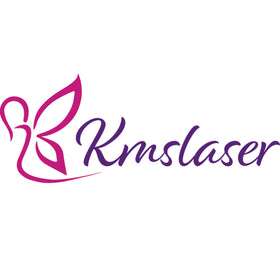Are you considering using shockwave therapy for your business? It can be a great way to reduce pain, promote healing, and offer treatments tailored to each individual customer. However, it's important to understand the risks before taking on this new therapy modality. Before making any decisions about how and when it should be used, evaluating the proper areas of use is an essential part of understanding its potential advantages – as well as its possible drawbacks. In this blog post, we’ll break down the most common areas where shockwave therapy should not be used in order to ensure that you get the best outcomes from your therapies for both customers and health providers alike.
Overview of shockwave therapy and what it is used for
Shockwave therapy has gained popularity in the medical field as an effective treatment for various musculoskeletal conditions. It involves the use of high-energy sound waves to stimulate healing and decrease pain. Shockwave therapy has shown promising results in treating conditions like plantar fasciitis, tendinitis, and even bone fractures. The treatment works by initiating a healing response in the affected area, which promotes blood flow and tissue repair. Shockwave therapy is non-invasive, and patients can typically resume their daily activities right after treatment. With its ability to promote healing and reduce pain, shockwave therapy is becoming a widely used form of treatment for many types of injuries and conditions.
Warning signs to watch out for when considering shockwave therapy
If you're considering shockwave therapy for your pain, it's important to be aware of the warning signs associated with this treatment. While it can be highly effective for some individuals, there are certain factors that may make it unsafe or unsuitable for others. For example, individuals with certain medical conditions like nerve damage or blood clotting disorders may be at increased risk for complications associated with shockwave therapy. Additionally, if you experience severe pain, swelling, or other discomfort during or after the procedure, it's important to seek medical attention right away. By understanding the potential risks and warning signs associated with shockwave therapy, you can make a more informed decision about whether this treatment is right for you.
Areas of the body that should not be treated with shockwave therapy
While shockwave therapy can be an effective treatment for a range of conditions, there are certain areas of the body that should not be treated using this method. One such area is the head and neck, as the intensity of the shockwaves can cause serious damage to the delicate tissues and structures in these regions. Other areas that should be avoided include the spine, abdomen, and genital regions. If you are considering shockwave therapy for a specific condition, it is important to consult with a qualified healthcare provider to determine if it is a safe and appropriate option for you.
Potential risks associated with shockwave therapy
Shockwave therapy is a revolutionary treatment that has been gaining popularity in recent years. However, like any medical procedure, it is not without risks. Some of the potential risks associated with shockwave therapy include bruising, swelling, and numbness. In rare cases, patients may experience more serious complications, such as skin or tissue damage. It is important to note that these risks are relatively low, and many patients have experienced significant benefits from this treatment. As with any medical procedure, it is important to carefully weigh the benefits versus the risks and to consult with a qualified healthcare professional before proceeding.
Alternatives to shockwave therapy if those areas are affected
When seeking treatment for an injury to a particular area of the body, shockwave therapy may not always be the best option. Luckily, there are several effective alternatives that can help alleviate pain and accelerate healing. Physical therapy, for example, can help by targeting the specific muscles and tissues surrounding the affected area with strength-building exercises and stretching techniques. Acupuncture and massage therapy are also viable options, with the latter providing relaxation and improved blood flow to the site of injury. In addition, non-steroidal anti-inflammatory drugs (NSAIDs) can be used to reduce inflammation and discomfort. Ultimately, the best alternative will depend on the nature and severity of the injury, so it's important to consult with a doctor or qualified healthcare professional to determine the most appropriate treatment plan.
Advice on how to find a qualified practitioner or professional for shockwave therapy treatment
Finding a qualified practitioner or professional for shockwave therapy treatment can seem daunting, but it's important to take the time to find someone who is skilled in this specialized form of therapy. One of the best places to start is by asking your primary care physician for a reference or recommendation. You can also do your own research online, looking for reviews and feedback from previous patients. It's important to choose someone who is licensed, experienced, and has a good track record of success. Don't be afraid to ask questions and get to know your practitioner before committing to treatment. With the right professional, you can experience the many benefits of shockwave therapy and improve your overall health and wellbeing.
Shockwave therapy can be a great tool to help you combat a variety of issues from chronic pain, to increasing range of motion. It is important though that all safety protocols are followed and the individual has an understanding of the potential risks associated with the treatment. If you consider shockwave therapy for your condition, always ask your practitioner about their specific expertise and qualifications to ensure you are getting the best care possible. Additionally, it is beneficial to research other treatments or alternatives as well so that you can choose the one that best fits your individual needs. Though there are potential risks with shockwave therapy, overall it can be an incredibly helpful diagnostic and healing tool if it is applied by a qualified professional who understands how to properly use it on the right parts of the body.

